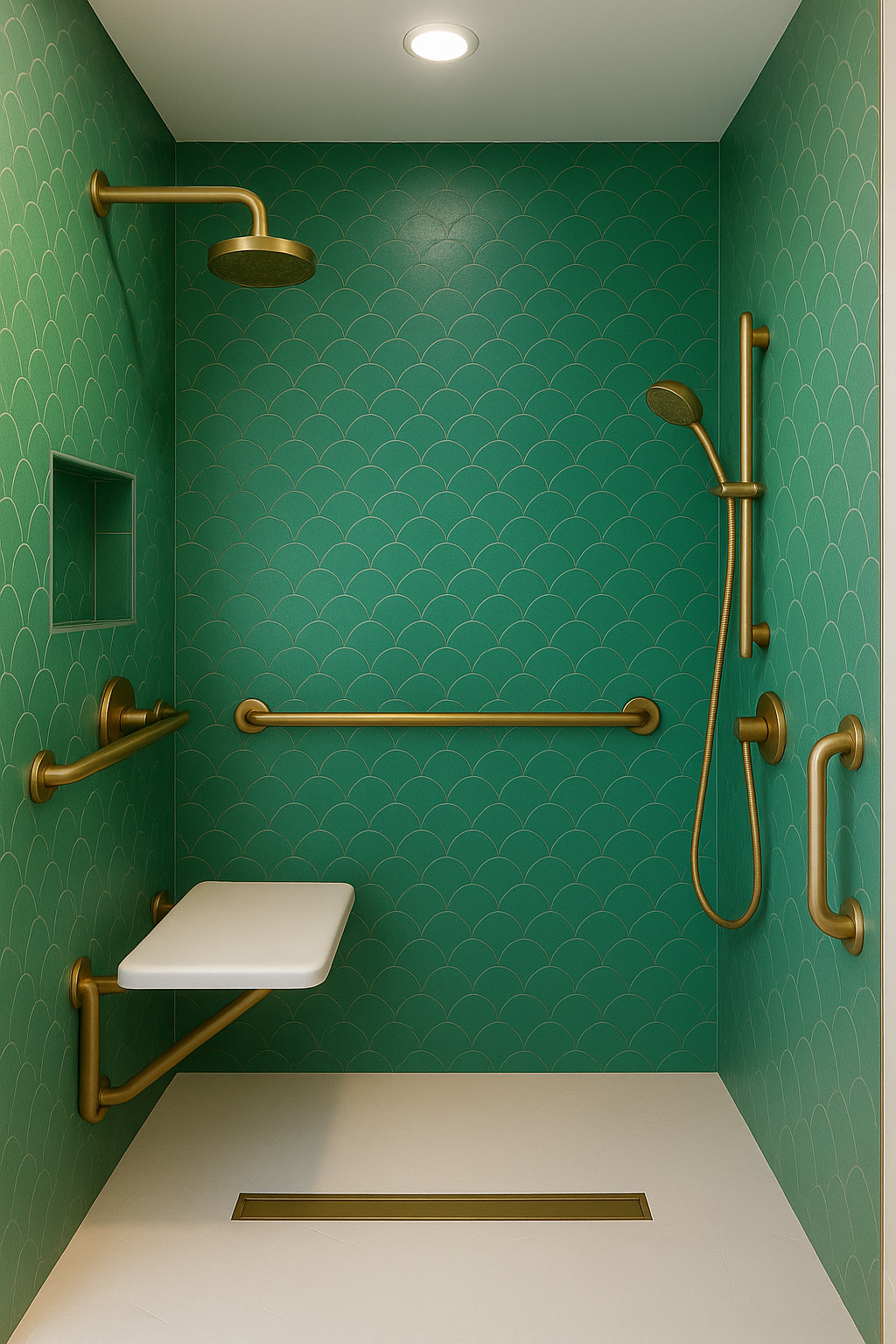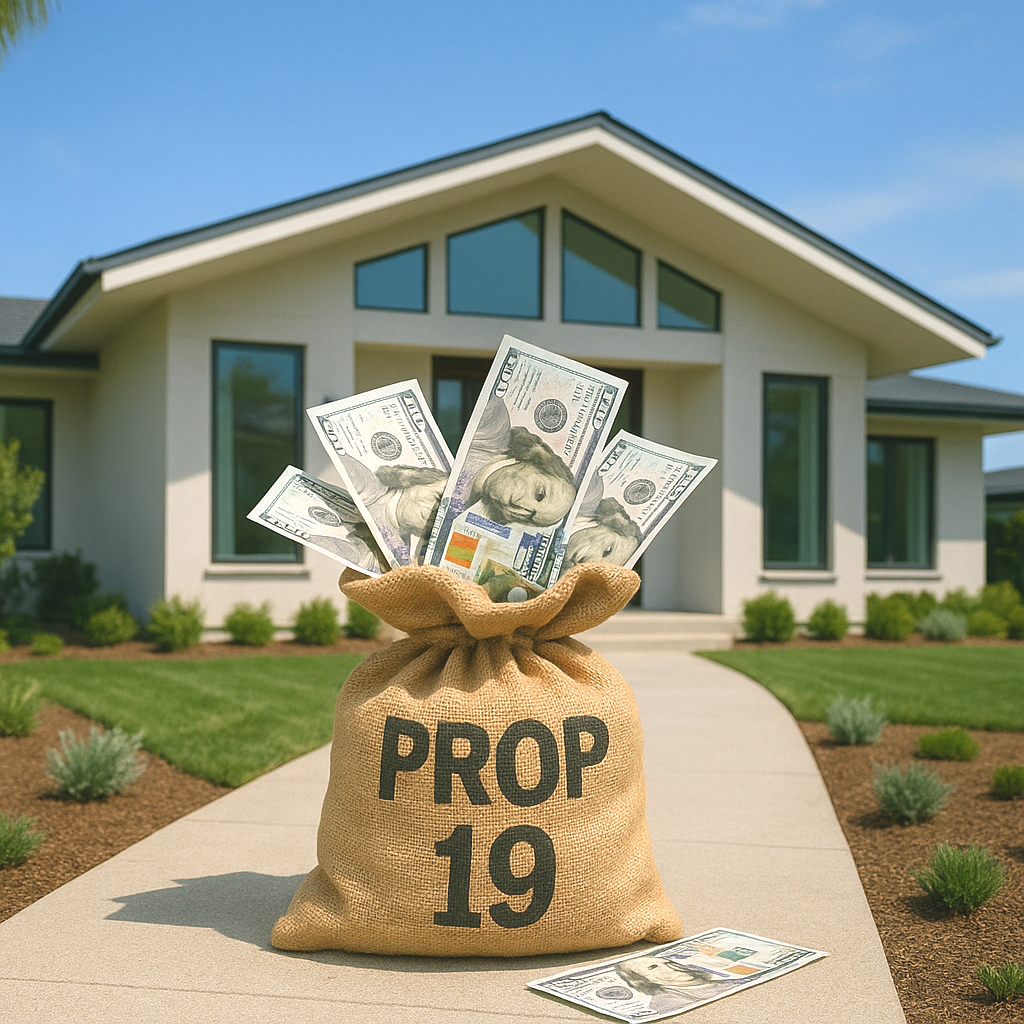How to Upgrade a Home to Be ADA Accessible: A Guide for Luxury Homeowners
With proper design you can enjoy safety, style, & function.
As the demand for ADA (Americans with Disabilities Act) compliant homes continues to rise, luxury homeowners are increasingly seeking ways to upgrade their properties to accommodate individuals with mobility challenges. Making a home ADA accessible not only increases its marketability but also ensures that it can be enjoyed by all individuals, regardless of physical abilities. Whether you're preparing to age in place or want to enhance the inclusivity of your luxury property, understanding the essential modifications can help you create a functional, stylish, and accessible living space.
In this blog post, we’ll explore a few ideas for upgrading your home to improve accessibility while maintaining its sophisticated design and appeal.
1. Widen Doorways and Hallways
One of the most critical steps in making a home ADA accessible is ensuring that doorways and hallways are wide enough for a wheelchair or walker to pass through comfortably. According to the ADA, doorways should be at least 32 inches wide, while hallways should be 36 inches or wider.
For a luxury home, these adjustments can often be made with minimal disruption to the home's design, as modern open floor plans and wide corridors are common features in upscale properties. Consider replacing traditional doors with sliding doors or automatic doors, which can enhance both functionality and elegance.
2. Install a Step-Free Entry
A step-free entry is essential for ADA accessibility, particularly for those who use a wheelchair, walker, or other mobility aids. Traditional steps at entryways can present a significant barrier, so it’s essential to create smooth, level entries that allow for easy access.
For homes with stairs at the front entrance, ramps or elevators are ideal solutions. Many luxury homes incorporate ramps into the overall design, ensuring they blend seamlessly with the home’s aesthetics. If the property has multiple levels, an elevator or chair lift can be installed discreetly, providing a safe and stylish way to navigate between floors.
3. Update Bathroom Features for Accessibility
Bathrooms can be a challenge for individuals with mobility issues, but there are several modifications you can make to ensure your bathroom is both luxurious and ADA compliant.
Roll-in Showers: Install roll-in showers with no thresholds to allow easy access for wheelchair users. These showers can be designed with high-end finishes, such as marble tiles, to maintain a sophisticated appearance while offering practicality.
Grab Bars: Strategically place grab bars in and around the shower, near the toilet, and by the bathtub. Choose stylish chrome or brushed nickel finishes to match the bathroom’s design.
Accessible Vanities: Vanities and sinks should be accessible for wheelchair users. This can be achieved by installing pedestal sinks or floating vanities that allow users to comfortably roll up to them.
Raised Toilet Seats: Ensure that the toilet is at an appropriate height for individuals with mobility challenges. Many modern designs offer comfort-height toilets that are perfect for ADA-compliant bathrooms.
4. Kitchen Modifications for Ease of Access
The kitchen is another critical area that needs to be accessible for all individuals. To make your luxury kitchen ADA-friendly, consider the following upgrades:
Lowered Countertops: Lower some of the countertops to a height that’s accessible to someone in a wheelchair. This may involve installing a portion of the countertop at a height of 28-34 inches.
Accessible Cabinets and Drawers: Install pull-out shelves or pull-down cabinets to make items easily accessible without bending or stretching. Touchless faucets are another luxury addition that offers both convenience and functionality.
Wide Pathways: Ensure there’s ample space between kitchen islands and countertops to allow easy maneuvering for wheelchairs. Clear floor space should be at least 60 inches in diameter for easy turning.
5. Ensure Adequate Lighting and Technology Integration
Good lighting and smart home technologies are essential to improving the accessibility of a luxury home, especially for those with limited mobility.
Smart Lighting Systems: Install motion-sensor lighting in key areas like hallways, bathrooms, and staircases. This eliminates the need to search for light switches, enhancing safety and convenience.
Voice-Activated Home Automation: Integrating smart home systems, such as voice-controlled assistants(Amazon Alexa, Google Assistant), allows homeowners to control lighting, climate, entertainment, and security systems with ease. This feature is invaluable for individuals with mobility challenges and adds an element of luxury to your home.
Adjustable Height Features: Consider installing adjustable-height countertops or lighting to cater to the needs of individuals who may prefer different settings. Electric-height desks or adjustable vanities add flexibility and convenience, particularly for those with limited mobility.
6. Design the Home with Minimal Barriers
In luxury real estate, design is paramount. When upgrading your home to be ADA accessible, it’s essential to maintain the aesthetics and style of your property while making it accessible.
Wide Hallways and Open Spaces: Embrace open floor plans with spacious corridors that create a seamless flow from one room to another. This minimizes obstacles and allows for ease of movement, making your home more navigable for those with mobility devices.
Non-Slip Flooring: Install non-slip flooring options such as textured hardwood, vinyl, or tile in high-traffic areas like bathrooms, kitchens, and hallways. Non-slip floors not only ensure safety but also maintain a refined look.
Minimal Thresholds and Clear Doorways: Ensure that all thresholds are low or non-existent, creating a smooth transition between rooms. Door frames should be wide and unobstructed to ensure easy access.
7. Consult with ADA Experts
To ensure your luxury home meets all ADA requirements and is both functional and stylish, consider consulting with an ADA compliance expert or an architect who specializes in accessibility. These professionals can offer valuable insight into what modifications are required to meet both safety standards and aesthetic goals.
Conclusion: Making Your Luxury Home ADA Accessible
Upgrading a luxury home to be ADA accessible is an investment that not only enhances the property’s value but also ensures that it can be enjoyed by everyone, regardless of physical abilities. By focusing on practical modifications such as widened doorways, step-free entrances, accessible bathrooms, and smart home technologies, you can create a space that offers both comfort and elegance.




